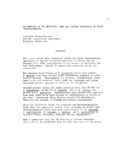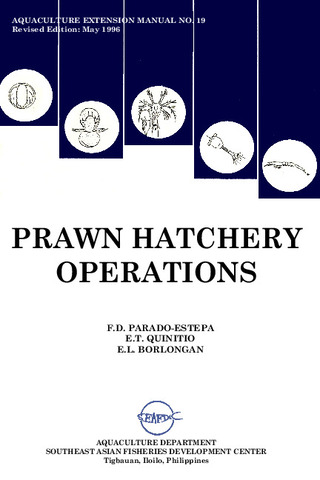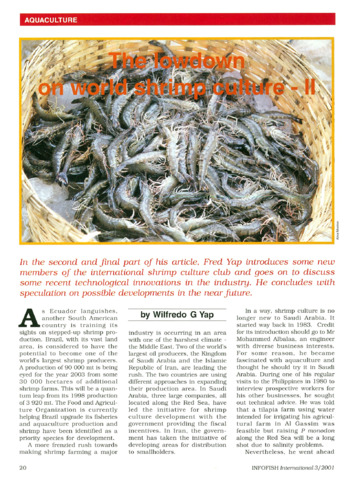The impact of indoor biofloc-based system on water quality, growth, and disease resistance of black tiger shrimp
- Global styles
- MLA
- Vancouver
- Elsevier - Harvard
- APA
- Help

View/
Date
2025-10Author
Page views
3,388ASFA keyword
AGROVOC keyword
Taxonomic term
Metadata
Show full item record
Share
Abstract
The present study investigates the efficiency of an indoor biofloc-based system for the intensive culture of black tiger shrimp (Penaeus monodon). Water quality, growth performance, and disease resistance of black tiger shrimp (0.35 ± 0.07 g) were evaluated after 90 days of rearing in a zero-water exchange system. Shrimp were stocked at 180 individuals/m3 in nine 5-ton concrete tanks under three treatments: biofloc with molasses (M), biofloc with wheat flour (WF), and a control group reared in a conventional clear water (CW) flow-through system. The WF treatment resulted in significantly higher final weight and improved FCR compared to CW (p < 0.05). Survival was also significantly higher in both biofloc-based treatments despite elevated concentrations of total ammonia nitrogen, nitrite-nitrogen, and nitrate-nitrogen levels in the WF group (p < 0.05). Additionally, Kaplan–Meier survival analysis indicated that shrimp reared and challenged in the biofloc system exhibited better resistance to Vibrio parahaemolyticus (VPAHPND1212), as evidenced by higher survival rates. Although total hemocyte count, prophenoloxidase, and respiratory burst activities were not significantly different from the control group (p > 0.05), they were consistently elevated in the biofloc-based treatments. Overall, biofloc-based treatments, specifically WF, proved effective in biofloc formation, contributing to improved water quality, enhanced immune response and disease resistance, and superior growth performance in P. monodon. This study highlights the potential of indoor biofloc systems as a sustainable strategy for intensive P. monodon culture in indoor biofloc tanks.
Suggested Citation
Estante-Superio, E., de la Peña, L. D., Geanga, T. M. M., Castellano, J. L. A., Cordero, C. P., Berlin, S. C., & Lazado, C. C. (2025). The impact of indoor biofloc-based system on water quality, growth, and disease resistance of black tiger shrimp. Aquacultural Engineering , 111, 102564. https://doi.org/10.1016/j.aquaeng.2025.102564
Type
ArticleISSN
0144-8609Collections
- Journal Articles [1258]
Related items
Showing items related by title, author, creator and subject.
-
An overview of the nutrition, feed and feeding techniques of prawn penaeid/shrimps
Piedad-Pascual, Felicitas (Philippine Council for Aquatic and Marine Research and Development, 1989)This paper echoes what transpired during the first International Conference of Penaeid Prawns/Shrimps held in Iloilo City in December 4-7, 1984, particularly on the Nutrition nd Feed Development. Around 25 papers were ... -
Series: Aquaculture extension manual; No. 19
Prawn hatchery operations
Parado-Estepa, Fe D.; Quinitio, Emilia T. ; Borlongan, Emeterio L. (Aquaculture Department, Southeast Asian Fisheries Development Center, 1996-05)
The manual, an updated version of the 1984 SEAFDEC/AQD manual, presents the underlying principles and step-by-step instructions of prawn larval and post-larval rearing. The techniques described are not only applicable to ...
; Borlongan, Emeterio L. (Aquaculture Department, Southeast Asian Fisheries Development Center, 1996-05)
The manual, an updated version of the 1984 SEAFDEC/AQD manual, presents the underlying principles and step-by-step instructions of prawn larval and post-larval rearing. The techniques described are not only applicable to ... -
The lowdown on world shrimp culture - II
Yap, Wilfredo G. (INFOFISH, 2001)This paper introduces some new members of the international shrimp culture club and goes on to discuss some recent technological innovations in the industry, particularly the polyculture of tilapia (mainly Oreochromis ...





